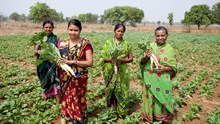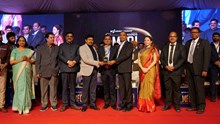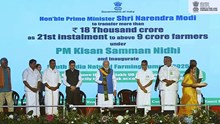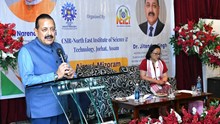
Over 15,000 fishers and fish farmers from 34 States and Union Territories participated in a nationwide series of virtual interactions organized by the Department of Fisheries (DoF), Ministry of Fisheries, Animal Husbandry and Dairying, between April and September 2025. The initiative, led by DoF Secretary Dr. Abhilaksh Likhi, provided a direct platform for participants to share challenges and aspirations, while offering crucial inputs to guide future policies for the sector.
Spanning six months and covering coastal, inland, hilly, island and North-Eastern regions, the consultations saw participation from cooperatives, startups, fisheries associations, ICAR institutions, the National Fisheries Development Board, and State fisheries departments. Participants acknowledged the support received under key government schemes such as Pradhan Mantri Matsya Sampada Yojana (PMMSY), Pradhan Mantri Matsya Kisan Samridhi Sah-Yojana (PM-MKSSY), Fisheries and Aquaculture Infrastructure Development Fund (FIDF), Group Accident Insurance Scheme (GAIS), Blue Revolution, and the Kisan Credit Card.
Among the main issues raised were the demand for quality fish seed, affordable feed, brood banks, and local feed mills. Stakeholders also stressed the need for stronger infrastructure, including cold storage, cage culture systems, hatcheries, ice boxes, and aquaculture facilities integrated with solar power. Many welcomed the government’s free installation of transponders on fishing vessels, which have proved vital in providing Potential Fishing Zone (PFZ) advisories, weather alerts, safe navigation routes, and preventing unintentional crossings of international maritime boundaries.
Technology adoption emerged as a recurring theme, with suggestions ranging from drones for transporting live fish to satellite-based solutions for fisher safety. On the marketing side, participants highlighted the need for dedicated fish markets, kiosks, and modern processing plants, along with diversification opportunities such as seaweed cultivation, pearl farming, and ornamental fisheries. They also called for robust disease control systems, aquatic health management, water testing laboratories, and regular capacity-building programmes for farmers.
Highlighting the significance of these consultations, Dr. Likhi said the feedback would serve as a bridge between fishers, farmers, and policymakers, ensuring growth that is “inclusive, sustainable, and farmer-centric” in line with the government’s five-year roadmap and the vision of Viksit Bharat 2047.
India, the world’s second-largest fish producer contributing 8% to global output, has seen production rise to 195 lakh tonnes, while seafood exports touched Rs 60,524 crore in 2023-24. With the fisheries sector growing at 8.74% annually, the government is now promoting cluster-based approaches to strengthen value chains, boost exports, and empower marginalized communities that depend on the sector for their livelihoods.
















